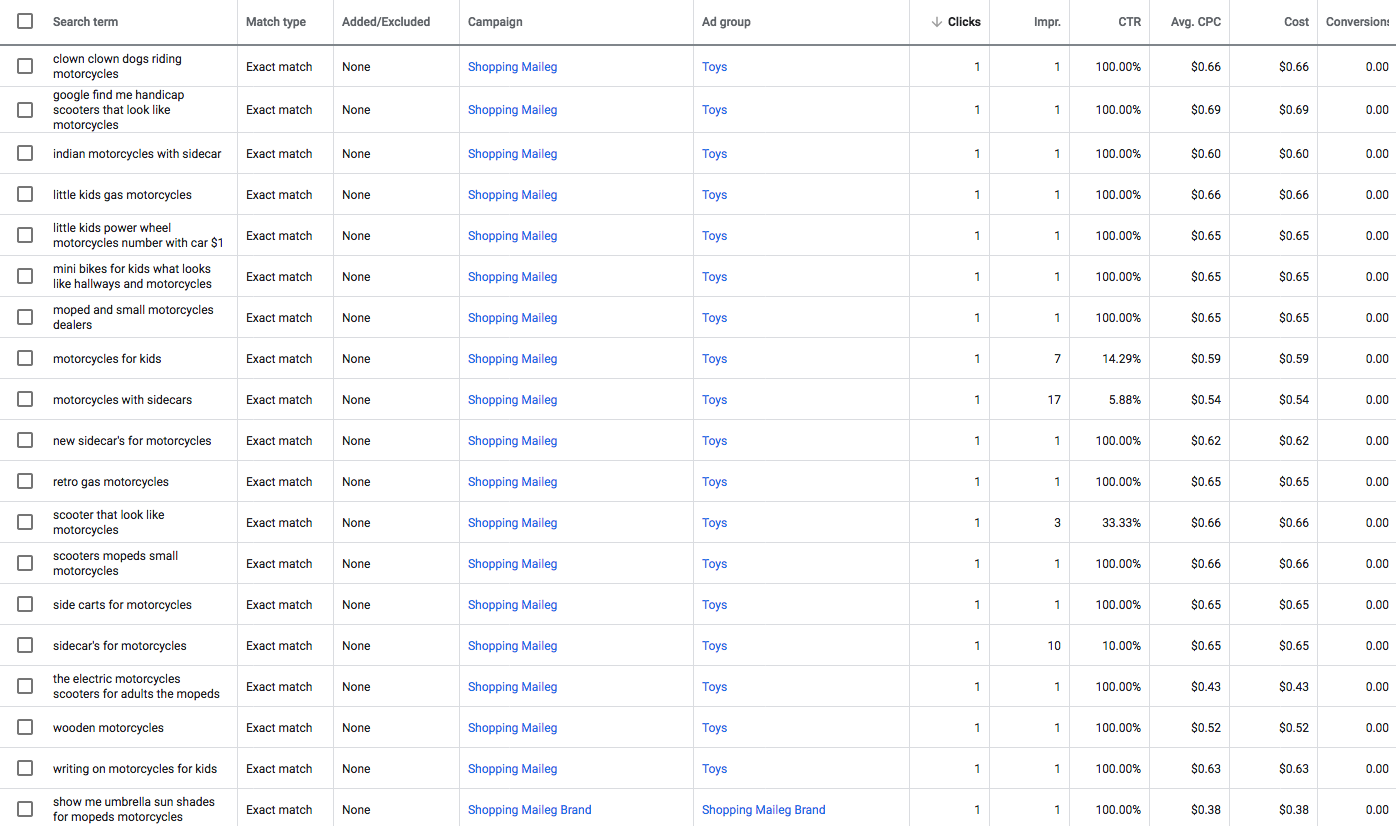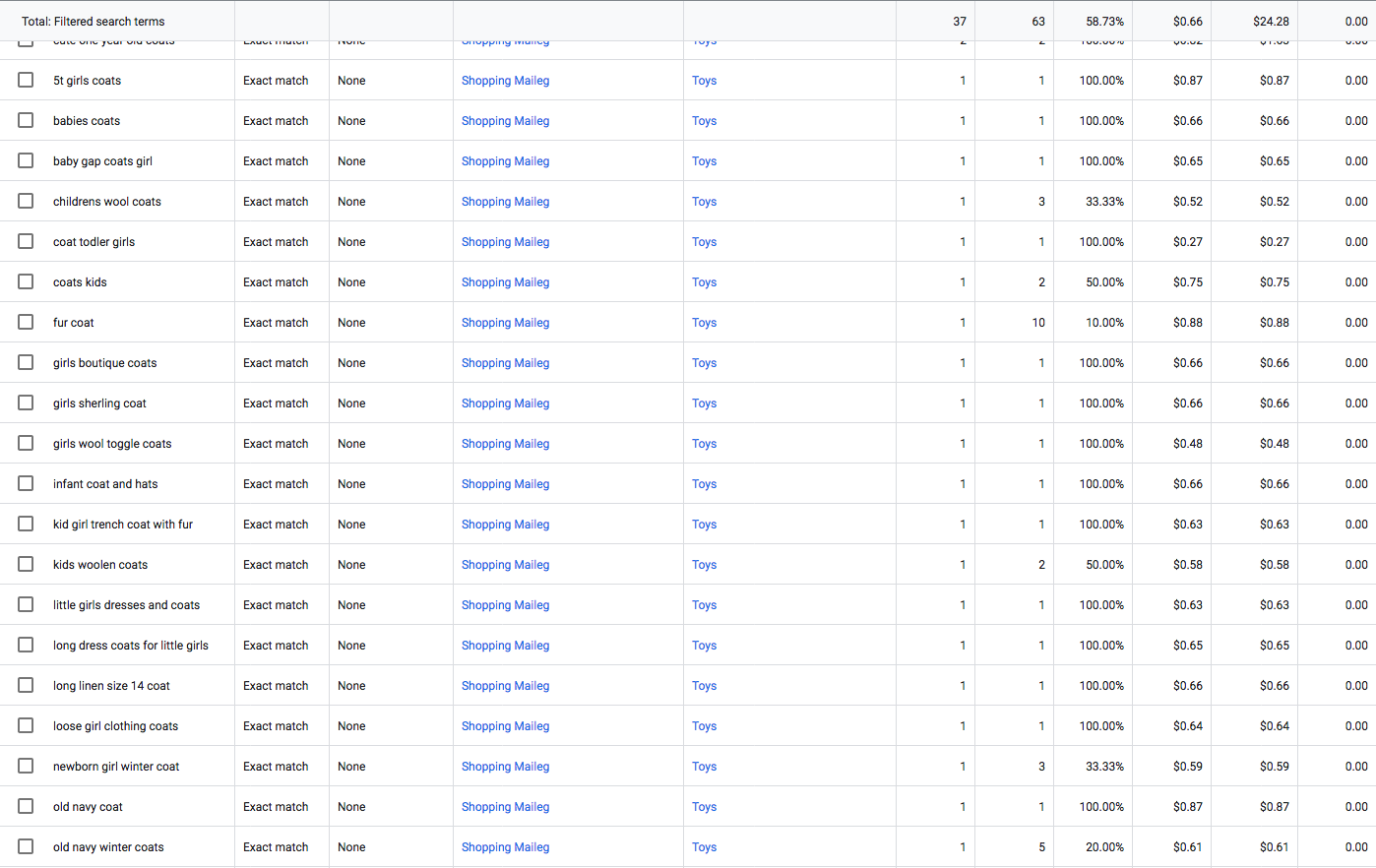22 Sep Machines Now Run Google: How to Avoid Wasted Shopping Spend & Fight Back
We will look back on 2019 and call it the golden age of shopping. Once we get past Q4 and are into 2020, I envision a host of changes coming from Google that is going to change the paid search and shopping game forever.
We are already seeing Google decide that close variant match should be the default (should it?).
However, before I get ahead of myself, let’s take a trip down memory lane and go back in time 6 years.
Back in 2013, I was living in London, England and living my best life possible. It also happened to be a moment in time when Google was calling Shopping by another name – Product Listing Ads (PLAs).
PLAs were free and a nice way to boost conversions and revenue for brands like ASOS and Jack Wills, which I was working on at the time.
Back then, traffic was not as plentiful as it is right now because Google was still testing out shopping as a product.
We could not see into the future where today, shopping is as much as 60% of the search traffic in the U.S.
Google is always finding new places such as Google Images, to run shopping ads in.
Over the preceding years, Google increased how much traffic shopping ads got by matching more search queries to products from our Merchant Center.
Google then saw how profitable shopping was for ecommerce brands and started to charge us money. Maybe we all know CPCs were coming for shopping but it was a nice free ride while it lasted.
During the last two years, we’ve seen Google test out different ad forms and design styles for shopping ads. We have seen them launch showcase ads and really make sure no SERP is left without a shopping ad if it can be helped.
Even our European colleagues had Comparison Shopping Services (CSSs) to help Google and the EU make things fairer (at least that was the idea).
Google will continue to tweak ad formats and find new places to run Shopping ads.
What Is Machine Learning?
However, their bigger focus over the last 18 months has been automation and machine learning.
What I want to focus on is how machine learning is trying to take over shopping and is not always getting it right.
First, let’s define what machine learning is:
“Machine learning is the scientific study of algorithms and statistical models that computer systems use in order to perform a specific task effectively without using explicit instructions, relying on patterns and inference instead. It is seen as a subset of artificial intelligence.”
I’m pretty happy with that definition as Google has really been trying to build models to let their computers perform the task of matching our products and SKUs to different search queries as they come in.
However, they have been doing a poor job at it because they (Google machines) have been taking a more literal meaning of a word and not the intent behind it.
In other cases, they are making connections that are not there. Let’s look at some examples from a toy client we work with.
Good (Or Is It Bad?) Examples
Motorcycle
Our toy client sells wooden blocks that you can build a sports car or a motorcycle out of.
Think Lego but in a wooden block form. It’s a great product and sells well.
The product description mentions both sports car and motorcycle, which means Google machines have taken both of these terms in a literal form and show the product against searches for motorcycle.


In July, we even saw brand searches for Yamaha come through. This is on top of a sidecar toy they sell from another brand that has a smorgasbord of search queries related to sidecar for bikes, e-bikes and of course motorcycles of all kinds.


This was an extreme case where we had to pause this product because it had been an endless battle for months to filter out the bad search queries related to a real sidecar/sidecar purchase, all while keeping the genuine searches.
What about fashion products for kids?
Kids Coats & Jackets
There are other examples like getting shown for girls/boys/kids coats and jackets because the client sells doll coats/jackets.


Maybe this is more of an AI vs. ML issue, but it points to a consistent issue that Google is having right now. They are trying to scale a system that is not ready for prime time.
I understand and respect they want to make more money. However, they can’t do it at the expense of wasting spend on bad clicks for a brand.
How to Manage Shopping Ads Today
In order to help cut down on that wasted spend, we have taken a few different steps with clients this summer.
The first step is being even more ruthless with our negative keywords and making sure we think of cases where we can add more negative keywords to anticipate future searches.
A good example is adding motorcycle brand names as negative keywords after seeing Yamaha come up in our SQR work. We also review our negative keyword list on a weekly basis to make sure we can consolidate terms where it makes sense.
If we see six exact match negative keywords with the term “camper stove” in them, we will put “camper stove” as a phrase match negative keyword.
In extreme cases, we may turn off a product if we don’t think the time invested is worth showing shopping ad for the product.
With automation, machine learning, and AI taking a larger role in our job function, we also lose the control we had back in 2013 and even the control we had to manage shopping campaigns a few years ago.
I don’t fear this change as the one thing we can count on is change is going to happen within our industry. What I do wish is that we had a way to help make these systems better and make our lives and jobs easier.
Features Request
When you look at the examples above and think about what would make our lives easier, my friend Julie said it best:
Have a mechanism in the UI to report a bad match & explain why it was a bad match for what you were trying to do.
— Julie F Bacchini (@NeptuneMoon) May 14, 2019
I don’t want my job to turn into training machines but if we could report the worst cases and help the machines understand why, it would make the whole system better.
Just the other day for our toy client, we got matched when someone searched for “chair” and another person for “house”.
I’m not even sure how these two came about.
What Does The Future Hold?
I’m not a futurist by any stretch of the imagination.
It’s clear that Google is moving forward with automation, machine learning, and AI across its ad business. As is Microsoft, Facebook and any other ad platform you can think of.
It’s up to us to let these platforms know where they need to improve and in what way.
It’s also up to us to prepare for a future where branding, creative and having a strong mind for strategy are going to be even more important. There is one major reason for this.
I can see a future where campaign setup and account structures are getting done by machines, which is both scary and interesting to think about. This may be another 5 years away but it’s possible.
If Google starts looking at all the ad accounts they have access to and looking at ones that are making money and profitable, why can’t a machine one day duplicate that?
This is not a question of if but a question of when.
More Resources:
- A Beginner’s Guide to Shopping Ads
- Smart Bidding in Google Ads: An Up-to-Date Guide
- PPC 101: A Complete Guide to PPC Marketing Basics
Image Credits
All screenshots taken by author, August 2019
Sorry, the comment form is closed at this time.